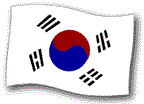

|
|
The Economy: South Korea Despite extensive financial aid from the
United States in the late fifties, South Korea's economy remained weak. Unemployment was
high, production was low, and the population was growing quickly. The poor economic
conditions caused civil unrest, which agents from North Korea tried to turn into revolt.
This situation led to a takeover by the South Korean military in May 1961. The military
exercised not only political control, but took over direction of the economy as well. The
first five-year plan, launched in 1962, embodied the new philosophy: emphasis on exports
and participation in the world market. Changes in national policies on business, banking,
and foreign investment led to an economic explosion. South Korea's annual Gross Domestic
Product (GDP) grew from $2.3 billion in 1962 to $508 billion in 1994 (in constant 1994
dollars). This translates into an annual per capita increase from $87 to $6700 over the
same period. Much of South Korea's production is in the hands of civilians, so the huge
increase in the GDP translates into a similar rise in the standard of living of the
average South Korean. South Korea has developed one of the most vigorous and dynamic
economies in the world today, growing at a rate of 6-8% per year, far above the world
average. Despite extensive financial aid from the
United States in the late fifties, South Korea's economy remained weak. Unemployment was
high, production was low, and the population was growing quickly. The poor economic
conditions caused civil unrest, which agents from North Korea tried to turn into revolt.
This situation led to a takeover by the South Korean military in May 1961. The military
exercised not only political control, but took over direction of the economy as well. The
first five-year plan, launched in 1962, embodied the new philosophy: emphasis on exports
and participation in the world market. Changes in national policies on business, banking,
and foreign investment led to an economic explosion. South Korea's annual Gross Domestic
Product (GDP) grew from $2.3 billion in 1962 to $508 billion in 1994 (in constant 1994
dollars). This translates into an annual per capita increase from $87 to $6700 over the
same period. Much of South Korea's production is in the hands of civilians, so the huge
increase in the GDP translates into a similar rise in the standard of living of the
average South Korean. South Korea has developed one of the most vigorous and dynamic
economies in the world today, growing at a rate of 6-8% per year, far above the world
average.Energy Abundant energy is one of the basic requirements for economic development of any nation. South Korea's natural energy resources are limited. There is some coal and some hydroelectric capability, but no known oil or gas reserves. Yet South Korea's energy demands are huge. Consequently, South Korea imports large amounts of oil and liquid natural gas and has developed a nuclear power industry. In 1993, the sources of energy production were nuclear (32%), hydroelectric (10%), petroleum (22%), and coal and other sources (36%). The present total capacity for electrical energy production at any given time is about 26,940 MW. Actual production in 1993 was about 137 billion kWh, or 2,847 kWh per person. Industry South Korea's industrial production is presently growing at an even faster rate than the general economy, some 12% per year. With a large and educated work force and limited natural resources, South Korea tends to import raw materials and export finished products. Industrial production has gone to high technology in recent years, creating and exporting electronic and electrical equipment, heavy machinery, automobiles, and ships. Light industrial products include textiles, clothing and footwear. Many of these products are familiar to American consumers. Agriculture Agricultural lands are limited in South Korea. For many years after the Korean War, food shortages continued to be a problem. Farming was done mostly by hand and animal power, and the resources to adopt modern techniques were beyond individual farmers.
[ Korea Today ] [ The Land of
Korea ] [ The People of
Korea ] [ Home ] [ Teacher Pages ] [ Modules & Activities ] |
HTML code by Chris Kreger
Maintained by ETE Team
Last updated April 28, 2005
Some images © 2004 www.clipart.com
Privacy Statement and Copyright © 1997-2004 by Wheeling Jesuit University/NASA-supported Classroom of the Future. All rights reserved.
Center for Educational Technologies, Circuit Board/Apple graphic logo, and COTF Classroom of the Future logo are registered trademarks of Wheeling Jesuit University.